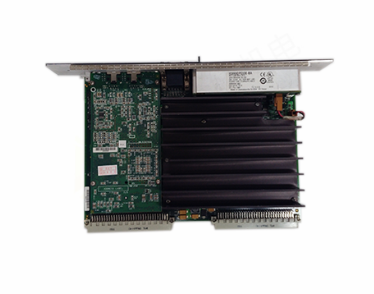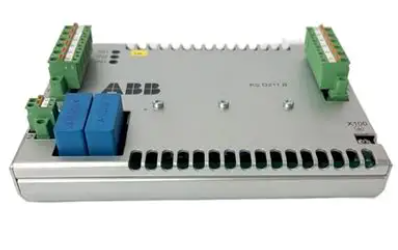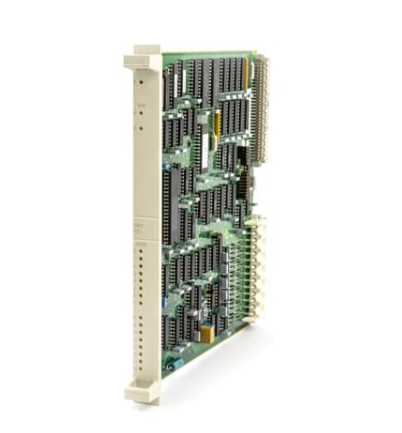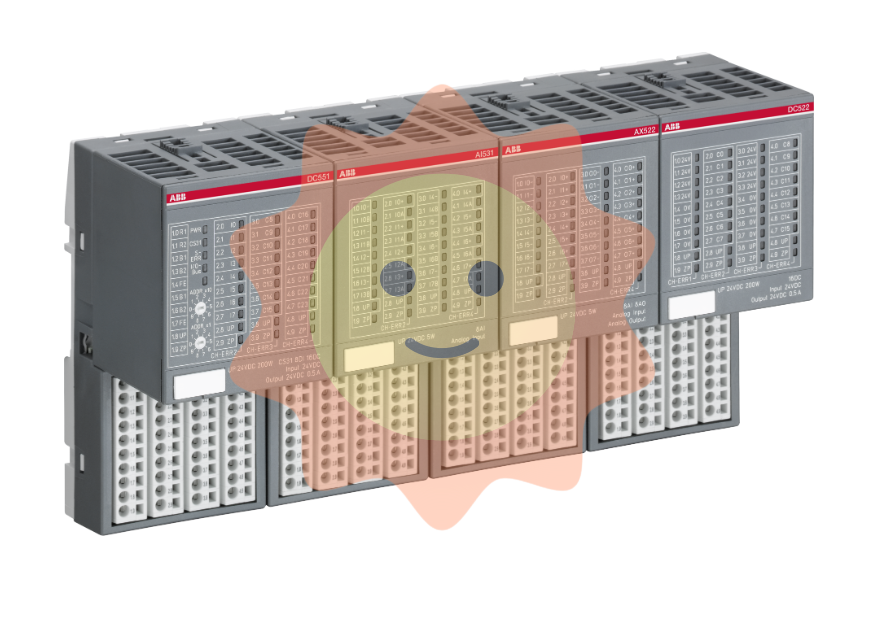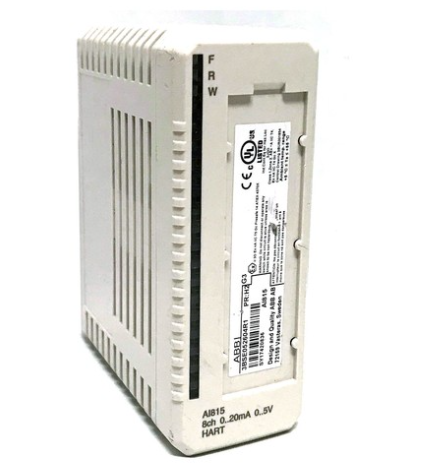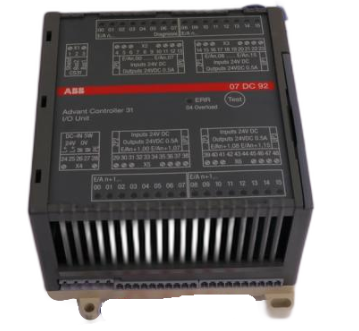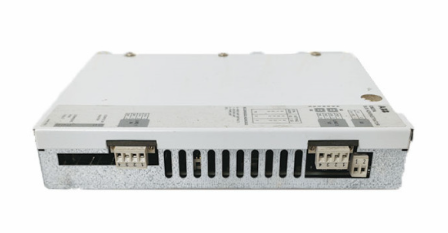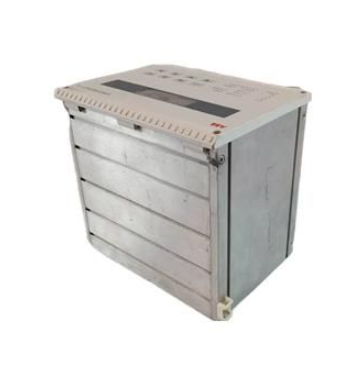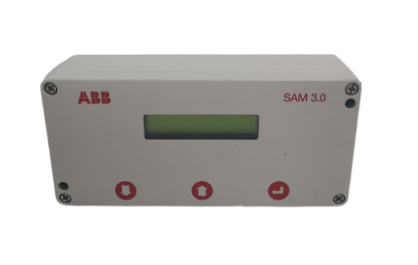The new pattern of fresh fast moving consumer goods is accelerating
What are the key elements of profitability: efficiency, scale, supply chain management...
"Efficiency and scale are the two key elements for an online fresh business to achieve profitability. Efficient warehousing (picking and packing) and fulfillment can reduce the cost per order, and this can only be achieved once the order reaches a certain size." -- Mr. Huang Mingduan, CEO of Sun Art Retail and Chairman of RT-Mart China
"To better serve the community, companies must ensure the quality of service, product selection, pickup and home delivery. Order density and penetration determine cost and efficiency." -- Mr. Jiang Jianfei, founder of Yipin Fresh Food
"In the next five years, the competition of supply chain capabilities will be the focus of the industry. Daily Youxian will invest 10 billion yuan in the next three to five years, support 10 billion cooperation scale suppliers, and suppliers for brand, channel, data, capital, capital six major empowerment." -- Ms. Liu Zhidan, Vice President of Daily Fresh Products
"Compared with other new forms, O2O (online and offline integration) business super home model is more robust and more profitable. The O2O market size of supermarket fresh food in 2020/2023 will reach 140 billion yuan / 500 billion yuan respectively, compared with 80-90 billion yuan in 2019." -- Mr. He Huijian, Vice President of Dada Group and general manager of JD Home Business Division
"Live streaming e-commerce will continue to grow rapidly. "Fresh food sales on the Kuaishou platform are six times higher than the same period last year." -- Ms. Wang Jing, head of food industry of Kuaishou e-commerce
"Each city has its own characteristics and is suitable for different fresh e-commerce models." There is no one solution for the whole country." -- Mr. Wang Wei, the legendary founder of fresh food
Goldman Sachs Research estimates that nearly half of China's FMCG will be purchased online by 2025 (up from 20% today), which means 260 million online FMCG orders will be generated daily. Mainly driven by the following factors:
As the digital level of Chinese consumers continues to increase, the shift in consumer behavior of buying fresh FMCG products online will continue, even in the post-epidemic period of life normalization, and not only in first - and second-tier cities, but also in lower-tier cities. This is thanks to e-commerce giants and unlisted companies launching a variety of new format options (from same-day delivery, to one-hour delivery and next-day pickup), bringing better user experience, better product quality and more attractive consumption propositions.
As the market transitions further from less efficient wet markets to structured retail, Goldman Sachs Research forecasts that the wet market's share of the overall fresh food market will decline from more than 50% in 2019 to 30% in 2025.
Point-to-point delivery prices for online orders of fresh FMCG (point-to-point delivery of fresh produce and packaged food directly from the farm/production base to home) are among the lowest in the world. However, due to the high spoilage rate due to the lack of temperature control and the weight limit of express packages, the proportion of this model is expected to gradually decline in the future. Goldman Sachs Research expects peer-to-peer delivery's share of the fresh and fast-moving consumer goods e-commerce market to decline from 59 percent in 2020 to 47 percent in 2025.

New forms of online-to-offline integration (O2O) are increasingly popular, including community group-buying models for consumers in low - and mid-tier cities, that is, centralized ordering and next-day pickup. We expect community group buying to account for 19% of the fresh FMCG e-commerce market by 2025.
As the share of in-store customer spending declines, the transformation of online sales carried out by supermarkets will continue to advance, complementing the single warehouse-to-home model, with O2O increasing from 2% in 2019 to 14% in 2025 (with major supermarket chains averaging 30-40%). It is expected that by 2025, the proportion of store-to-home/mega-warehouse-to-home/micro-warehouse-to-home models will reach 10%, 19% and 5% respectively.
In the fresh industry software technology service provider Dongpo CEO Luo Ming view, in the supply chain, the advantage of self-built supply chain is relatively strong self-control, the disadvantage is that it needs to be managed by itself, its efficiency is not necessarily higher than the efficiency of third-party management, and the internal self-built procurement team will even be inefficient and the quality of finding goods is worse than that of third-party suppliers.
"A large enough platform must build its own procurement team and go to the source to find goods, but if the volume is not so large, it will be relatively more efficient to find a third-party supplier." 'he said.
It's a field of competition between startups and titans: the titans have a lot of money, but aren't necessarily better at picking coins than the startups; Players who have an advantage in the mode will also lose their leading position because they do not pay attention to the operation; Even a small and medium-sized platform in a small corner of the country, backed by a solid local supply chain, may also harvest a peaceful situation in the fierce war.
After all, halfway through the run, the marathon has no race point.
Who will be the winners and main beneficiaries?
Physical goods and life service e-commerce giants in the field of fresh FMCG head-on: With the new model of fresh FMCG e-commerce increasingly focusing on self-pickup in nearby communities/stores or instant delivery to home in nearby fresh FMCG new pattern supermarkets, this vertical area with high stickiness and high purchase frequency is witnessing the direct confrontation between physical commodity e-commerce giants Alibaba, Jingdong and Pin-duo and life service e-commerce giants Meituan and Didi in the fresh sector.
Investors' main questions and doubts: What's different this time?
1 Is increased penetration only a temporary phenomenon during the pandemic?
In the past few months, life for Chinese consumers has largely returned to normal, and restaurant spending has rebounded to levels close to last year. However, the first-use learning process and the increase in online fresh FMCG options are driving continued growth and penetration.
2 Who will be the winner and does Winner take all?
Goldman Sachs Research expects the five fresh FMCG e-commerce models of enterprises will gradually integrate, similar to the development process of other electricity commodities. However, we believe that the overall fresh FMCG e-commerce market share will be more fragmented than apparel, electronics and home appliances in the next few years.
Fresh retail chess to the mid-plate, community fresh stores seem to be gradually becoming the standard. Not to mention the previous MINI format, fresh legend, Yi pin fresh, money dama and other entrepreneurial chain brands in the recent year are also in a state of accelerated development.
Recently, some media exposed that the food line fresh, which has been focusing on fresh self-pick cabinets, has quietly launched its own community fresh stores for nearly a year, and the current store operation is in good condition. It is worth noting that the attempt of this new business line has also been tested by the epidemic. Food line fresh to Tiger sniff said that at present, food line operates a total of 8 offline community fresh stores in Suzhou, and plans to open a total of 100 within the year.
Of course, the current fresh retail has been difficult to strictly distinguish between online and offline, online customer offline delivery is the norm. The essence of the watershed is whether to open a shop. However, there is also a recent news, has been a community fresh store model of the rapid expansion of the country's Qian Dama recently registered their own e-commerce company "Qian Xiao Xian", Qian Xiao Xian exactly what is like, the outside world is still unknown.
Going back further, Meituan, which has been developing quietly, initially adopted two models of pre-warehouse and self-pickup in different cities. Yonghui, which has always been known for its own excellent supply chain, in addition to the familiar Yonghui MINI, has recently launched the Yonghui Market (Hui Fresh Market), which is equivalent to returning to the "merchant collection platform".
In the recent period of time, these operations in the field of community fresh, it seems difficult to summarize in a word, open a shop or not open a shop, just a representation. The real feature is that almost all companies focusing on community freshness are trying to "walk on two legs", that is, launch at least two or more models to deeply cultivate the community.
It can be summarized by borrowing a very famous concept in Chinese economic history, that is, the "dual-track system" of community fresh food. It is worth studying what trends this represents.
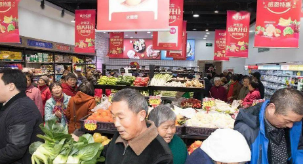
Why should Food Store Fresh open after eight years of self-pickup mode operation? Does this imply some new changes in fresh retail?
It is understood that the food line fresh store area is below 100 square meters, "fresh supermarket at the door." The product is rich, so that consumers can buy all at home. Vegetables, as daily consumption needs, account for the highest proportion of the sku scale in the store, especially the leafy vegetables with higher consumption frequency, which are the main commodities in the store operation. Food line community fresh store category positioning is "don't pick cabbage."
Moreover, before determining the positioning of the community fresh store, the food line also tried the vegetable shop, and finally decided to do the community store from multiple angles such as convenience. In terms of store size, after repeated polishing, the core store size was finally determined to be about 100 square meters. According to the local media observation, the SKU of the food line fresh community store is more than 800, and the average daily net profit of the food line fresh store is maintained at more than 1500 to 2000 yuan, the monthly cost of a single store is about 30,000, and a total of 4 employees are needed in a single store, including the store clerk and the store manager.
Based on the above information, it can also be seen that although the main fresh, the area is not large, but the number and category width of fresh SKUs are larger than that of community stores such as money Dama. It will also involve some daily necessities related to the kitchen scene, combining high frequency and low frequency.
As for the relationship with the existing self-service cabinets, Food Fresh pointed out that the offline store business will effectively supplement the existing business model of Food, including the supplement of instant consumption scenarios, as well as the procurement of goods at the end of the supply chain and the cold chain distribution. Consumers can buy online, pick up food from the community cabinet, and also buy directly in the store, and the consumption scenario is more diversified. Interestingly, in some large communities, it is not excluded that self-pickup cabinets and community stores exist at the same time.
In other words, for food and fresh, what model is not important, it is important to understand the community scene. How does this inspire your peers?
Reconstructed community model
If we go back to some basic logic, we will find that there are some common dimensions of retail's understanding of the market in the past. City dimension, first line, second line and third line; There are business circle dimension, core business circle, community business circle; There is also a format dimension, such as what the single-store model of convenience stores should be, what the hypermarket should be, and what the standard supermarket community supermarket is, all have a corresponding logic and knowledge system.
But after the community scene, in fact, whether it is the original retail veterans or cross-border power, in fact, you will find that on the whole, it is still a chaotic war, eight impenetrable across the sea, and a variety of new models and new ideas are also many. So there is a dual-track system, or even a multi-track system. But no one has yet come up with a fully universally convincing model. What's the problem? Tiger Sniff believes that the key is the differentiation of the community, which cannot be matched in the past analysis dimension.
Simply put, in the past, China's retail industry analyzed the market, or the granularity was too large, and the city was the unit. Or it's too small, and it jumps straight to the one-shop model. Of course, it is right to do the retail industry to pay attention to the single store model, and the company that does not pay attention to the single store model is not dead but also on the way to death. But the problem is that today's consumers are consumers who have been educated for nearly ten years by powerful e-commerce platforms and social platforms, while fresh is a brand with low concentration and high non-target categories, only relying on a good location to open a few stores to understand local consumers, the feedback is likely to be one-sided.
Perhaps a better way is to build a new fresh community model, neither based on the city, nor based on a single point (store, pre-warehouse, self-pickup point, self-pickup cabinet, etc.), to build their own data model, but really based on the user dimension of the community, to build a data model. Just like the department store shopping center industry used to study the shopping district.
Truly building a model based on community users means abandoning the "me first" mindset. In the past, for people who opened a store, it was the customer who entered the store, and those who walked outside the door did not count. For online platforms, too, registration counts. But if you really consider the problem based on the community, it is to start from the user's point of view, first look at what needs, and then consider what formats to meet the needs.
In fact, whether it is an online platform or an offline entity network, in essence, it is a network that provides basic life services to the community residents, as for the sky net and the ground net, this form itself may not explain what the problem is, if the net is too large, what network will also have fish. Of course, one approach is to fill the net as much as possible, and the density of the network is to be extreme.
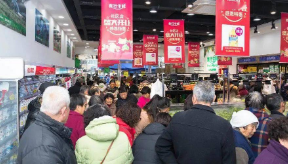
However, the difficulty of the fresh business is that it is a stock business, which has been around since ancient times, at least with the birth of the city, there must be corresponding solutions. Therefore, there is no absolute blank market and new continent, like finding the opportunity to pre-empt the absolute density, it is very difficult. Secondly, due to the continuous hot fresh retail, in addition to the expansion of existing players, there are constantly capital and new players entering strongly. Recently, the cross-border Baoneng fresh plan to open 10,000 stores in the country has also surprised many people. The latest news is that the target of Guangzhou and Shenzhen is 2000, which refers to the base camp of Aunt Qian.
Not to mention whether the goal of 10,000 is realistic, it is conceivable that the property suitable for opening community fresh is likely to usher in a round of rising tide. This does not take into account the main online fresh advance warehouse and the attack of the Internet giants. In a word, the density of the store is important, but the current market has not given any single player a time window to achieve "density", and any community in a second-tier city may be fresh "Three kingdoms". You have me, I have you.
If you want to take an example, the most typical battlefield is precisely Wuhan City, which was hit hardest at the beginning of the epidemic.
Recently, the industry has been informed that the United States group to buy food after a period of time to test the water, began to give up strategically. You know, during the epidemic, the Meituan buying team did not withdraw, stuck to Wuhan, and played a good reputation. Now Wuhan "Kaesong", the local Meituan buy food pre-warehouse is to be closed, it is understood that the Meituan preferred will continue to operate in Wuhan. However, from the perspective of the structure, the United States group buy food and the United States Group is preferred to be "two teams".
There are many reasons why Meituan decided to give up Wuhan, but it is an undeniable fact that the fresh food market in Wuhan is extremely competitive after Gaesong. Pinduoduo recently launched the buy more food, the first stop is Wuhan. Pupu Supermarket, a pre-warehouse supermarket in southern China, has also recently opened a warehouse in Wuhan. Qian opened her first store in March this year and is said to have sold more than one million yuan by the end of April. Even Ali has set up 100 "Ele. me buy food" pick-up points in Wuhan. It is not too much to say that Wuhan's community fresh battlefield has been "scorched earth".
- EMERSON
- Honeywell
- CTI
- Rolls-Royce
- General Electric
- Woodward
- Yaskawa
- xYCOM
- Motorola
- Siemens
- Rockwell
- ABB
- B&R
- HIMA
- Construction site
- electricity
- Automobile market
- PLC
- DCS
- Motor drivers
- VSD
- Implications
- cement
- CO2
- CEM
- methane
- Artificial intelligence
- Titanic
- Solar energy
- Hydrogen fuel cell
- Hydrogen and fuel cells
- Hydrogen and oxygen fuel cells
- tyre
- Chemical fiber
- dynamo
- corpuscle
- Pulp and paper
- printing
- fossil
- FANUC
- Food and beverage
- Life science
- Sewage treatment
- Personal care
- electricity
- boats
- infrastructure
- Automobile industry
- metallurgy
- Nuclear power generation
- Geothermal power generation
- Water and wastewater
- Infrastructure construction
- Mine hazard
- steel
- papermaking
- Natural gas industry
- Infrastructure construction
- Power and energy
- Rubber and plastic
- Renewable energy
- pharmacy
- mining
- Plastic industry
- Schneider
- Kongsberg
- NI
- Wind energy
- International petroleum
- International new energy network
- gas
- WATLOW
- ProSoft
- SEW
- wind
- ADVANCED
- Reliance
- YOKOGAWA
- TRICONEX
- FOXBORO
- METSO
- MAN
- Advantest
- ADVANCED
- ALSTOM
- Control Wave
- AB
- AMAT
- STUDER
- KONGSBERG
- MOTOROLA
- DANAHER MOTION
- Bently
- Galil
- EATON
- MOLEX
- Triconex
- DEIF
- B&W
- ZYGO
- Aerotech
- DANFOSS
- KOLLMORGEN
- Beijer
- Endress+Hauser
- MOOG
- KB
- Moxa
- Rexroth


Email:wang@kongjiangauto.com



